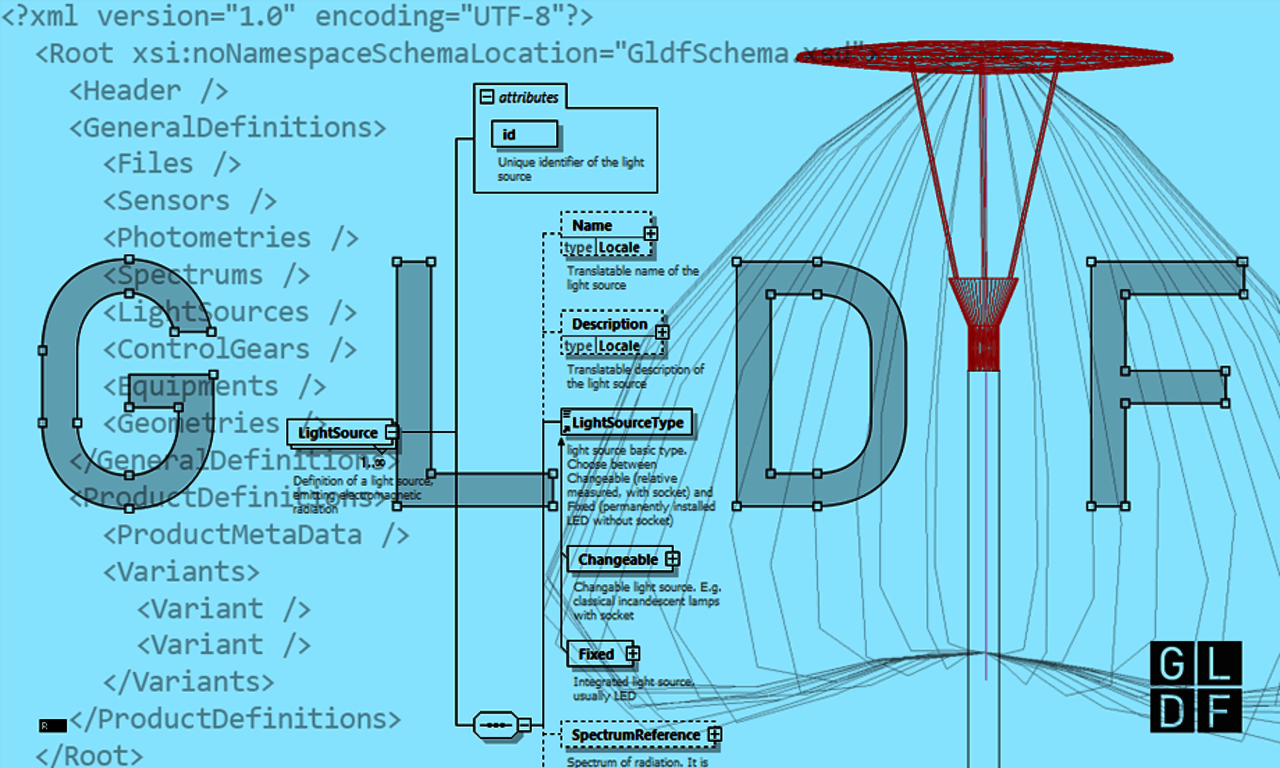What are the benefits of GLDF for you as a planner?

The Global Lighting Data Format (GLDF) is a unified, open data format that allows lighting data to be used seamlessly across different software solutions (such as DIALux) without the need for constant format conversion or adjustments.
We co-developed this format because there was no common standard before. Manufacturers had to prepare their data separately for each software, and planners often faced incompatible or incomplete data — a process that was cumbersome, costly, and error-prone.
In this article, we've compiled all the advantages of GLDF for you.
All information about a luminaire in one data format
GLDF provides you with a standardised, open data format that bundles all relevant information about a luminaire - including electrical and photometric properties, metadata, 3D geometry and other technical and commercial parameters - in a single file. It also supports parametric models and the detailed mapping of product variants. The creation of GLDF data by manufacturers is uncomplicated and fast. This reduces the workload for manufacturers, which should result in higher and more up-to-date data quality for you as a user.
With GLDF, you can fully map luminaires in a BIM process for the first time.
When designing the format, we took existing international standards (ISO/CEN) on BIM parameters for luminaires into account. Furthermore, GLDF is now also cited in various standards (IES, TM 32-24).
Thanks to GLDF, in future you will only need a single data format to describe luminaires in all AECO (Architecture, Engineering, Construction, and Operations), BIM and CAD applications - without any additional conversions or loss of information.
In this context, it means that GLDF can be used as a uniform data format to define luminaires and sensors in all phases of a construction project in an efficient and standardised way - regardless of whether you work in architecture, engineering, construction or building management.
More efficiency for your lighting design
With GLDF, you have all the important technical data (text, photo, article number, 3D model, spectra, etc.) in one place - from light distribution and colour temperature to luminous flux and control type such as HCL or RGBW. For you, this means: more precise calculations and more realistic simulations directly in your lighting design software, without the hassle of searching or manually updating data.
You can also work flexibly, as GLDF supports different service phases and levels of definition (LOD), which can be individually derived from GLDF for planning offices, for example. The electrical planner receives all important electrical parameters after the lighting design.
GLDF also stores maintenance information. This means that you retain an overview not only during planning, but also during the long-term management and maintenance of lighting systems. This is not only an advantage for lighting design, but also for facility management.
Flexibility through variant and geometry options
GLDF makes it possible to define several product variants within a single file. For example, different light colours, control types or mounting types can be stored in one file so that you as a lighting designer have flexible access to the best option during the project.
If there is a luminaire with different dimming or control variants, for example, the different variants are stored in the file, including the corresponding article numbers. GLDF also supports both parametric geometries (P3D) for simple models and realistic 3D models (L3D) for detailed visualisations in the planning software.
Open Source
GLDF is published under the ‘MIT’ open source licence and is constantly being expanded. Users can define their information requirements in their own parameters and add them to the format as suggestions.
Friedrich Wilhelm Bremecker will provide a detailed insight into the topic at Licht 2025 on 1 April. Further information is also available at https://gldf.io